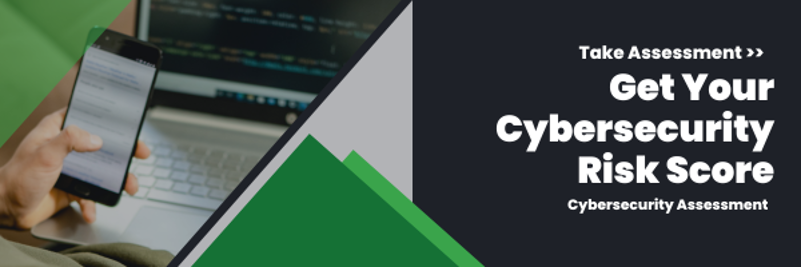In an era dominated by digital transformation, the importance of data protection has never been higher. From sensitive customer information to proprietary business strategies, organizations store a wealth of invaluable data.
However, with the rise of cyber attacks and the increasing complexity of technology landscapes, the risk of data loss has become a paramount concern. To mitigate these risks and ensure the security of digital assets, consider implementing a robust data loss prevention (DLP) strategy.
What is Data Loss Prevention?
DLP is a set of strategies, tools and processes designed to detect and prevent unauthorized access, sharing, loss, leakage, theft or destruction of sensitive information. A strong DLP solution utilizes a combination of standard cybersecurity measures, including:
- Antivirus and antimalware software
- Artificial intelligence and machine learning
- Encryption
- Behavior analytics
- Firewalls
- Intrusion detection and prevention systems
- Security information and event management (SIEM)
DLP is a critical component of modern cybersecurity strategies, given the rising number and frequency of cyber threats, including malware, ransomware and phishing. The goal is to ensure that confidential data remains so and doesn’t fall into the wrong hands, intentionally or unintentionally. Although human error and negligence are huge contributors to lost or leaked data, insider threats should also be a concern. One tool companies can use to combat insider threats is Microsoft Purview.
Why Does Data Loss Prevention Matter?
As you can imagine, protecting data has numerous benefits:
- Protect confidential information: Businesses deal with vast amounts of sensitive data, including customer details, financial records and intellectual property (IP). DLP helps prevent unauthorized access, leakage or theft, especially if employees work remotely or in a hybrid workplace.
- Compliance with regulations: Many industries are subject to stringent data protection regulations, like GDPR, HIPAA and CCPA. A robust DLP strategy ensures regulation compliance, avoiding legal consequences, hefty fines and reputational damages.
- Preserved reputation: Speaking of reputation, a data breach can severely damage a company’s reputation and lead to high customer turnover. By preventing data loss, companies can maintain trust with clients, partners and stakeholders.
- Enhanced data visibility: With a DLP solution, you can improve data visibility across your network, endpoints and cloud, which can lead to quick identification and mediation of unauthorized activity.
- Incident response plan: Creating a DLP solution often goes hand in hand with implementing an incident response plan. This determines how your company will address and mitigate a data breach by identifying the source, containing the damage and notifying affected parties per compliance regulations.
The Three Data Loss Prevention Types
There are three main DLP types: network, endpoint and cloud. Companies should choose one or a mixture of the three, depending on their needs and data.
- Network DLP focuses on protecting sensitive data in transit throughout a network. This solution helps companies control their information and prevent unauthorized access by recording when data is accessed, who accessed it and where it moved in the network, providing increased visibility into network traffic activity.
- Endpoint DLP protects data at the user level by monitoring and controlling data access and usage on endpoint devices, including servers, computers, laptops, phones, tablets and more. It detects potential data leaks or loss by monitoring data transfers and can even stop users from performing prohibited actions.
- Cloud DLP protects data stored, processed and accessed in cloud-based systems like Office 365 and Dropbox. This solution can scan, classify, monitor and encrypt data in the cloud. Cloud DLPs have become vital for companies moving to the cloud or with remote and hybrid workers.
How to Create a Data Loss Prevention Strategy
Implementing a robust DLP strategy involves several key components, and you want to ensure that the comprehensive policy aligns with your overall data security strategy.
- Define your requirements: First, you must define what your business wants to achieve with the DLP strategy. You must also determine which compliance regulations your company needs to meet. This will determine how you should monitor and protect your data.
- Data identification: Next, you must identify all the structured and unstructured data your company holds. Determine where it’s all stored, including on-premise and the cloud. Knowing what data your company has and how it’s used can help identify unauthorized access and sharing.
- Data classification: After identifying your data, it’s time to classify it based on sensitivity and risks. Types of data can include personally identifiable information (PII), personal health information (PHI), IP and financial information. Different data is subject to varying levels of protection, so it’s time to set and prioritize appropriate security measures. Ask yourself which data would cause the biggest problem if it was stolen or leaked, or which data is the most likely to be targeted by hackers.
- Define roles and document the DLP: Then, you should establish who’s accountable for what, who should be notified during a data breach and what people’s responsibilities with the breach. This checks and balance system will make navigating the breach easier. You should also document the DLP process to ensure your company knows what deployment procedures to follow and to avoid mistakes, as well as meet compliance requirements.
- Monitor activity: From there, businesses should monitor user activity and determine who has access to what data and what they’re doing with their access; see if any user behavior is putting the data at risk. This is the time to limit access to people who need the data to complete their jobs. Monitoring is essential for protecting data in motion, in use and at rest.
- Detect and prevent data leaks: Utilize DLP tools to identify and stop potential data breaches, leaks or misuse. When a breach or violation is discovered, the tools can send alerts and provide real-time analytics, enabling security teams to respond to the threats and adjust as needed. DLP tools can also encrypt and isolate data to prevent users from malicious or accidentally sharing it.
- Continuous training: With human error being a major contributing factor to leaded data, your business should offer ongoing employee training and guidance to guarantee that staff understands the importance of the DLP policies. They should know how to recognize and avoid potential threats and what to do when data is lost or stolen. This can reduce the risk of human error leading to data loss and build a culture of data security.
- Regularly test and review: After establishing your DLP policy, you should review and test it regularly. Make any changes to your policy to encompass new features, capabilities and functions. You also want to ensure that your DLP is working as intended.
Thriveon Can Help
Enforcing DLP solutions can be difficult and complex, especially if you’re not a technical company and don’t understand all the nuances. That’s why partnering with a managed service provider like Thriveon is the way to go.
Thriveon offers a range of services, including managed IT and cybersecurity compliance. We can help you customize your DLP solution to focus on your company’s priorities and other requirements.
Schedule a meeting with us today to see how we can help prevent data loss.

